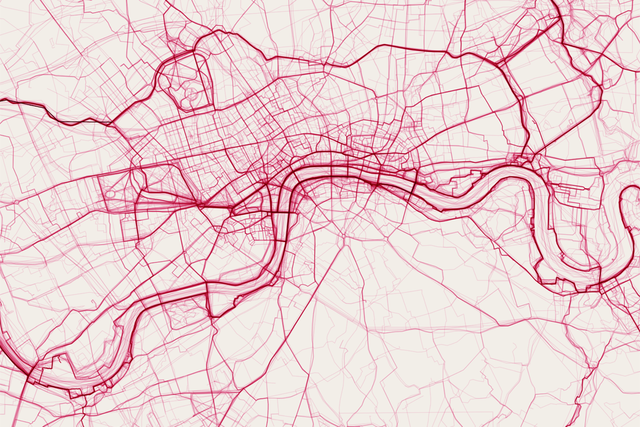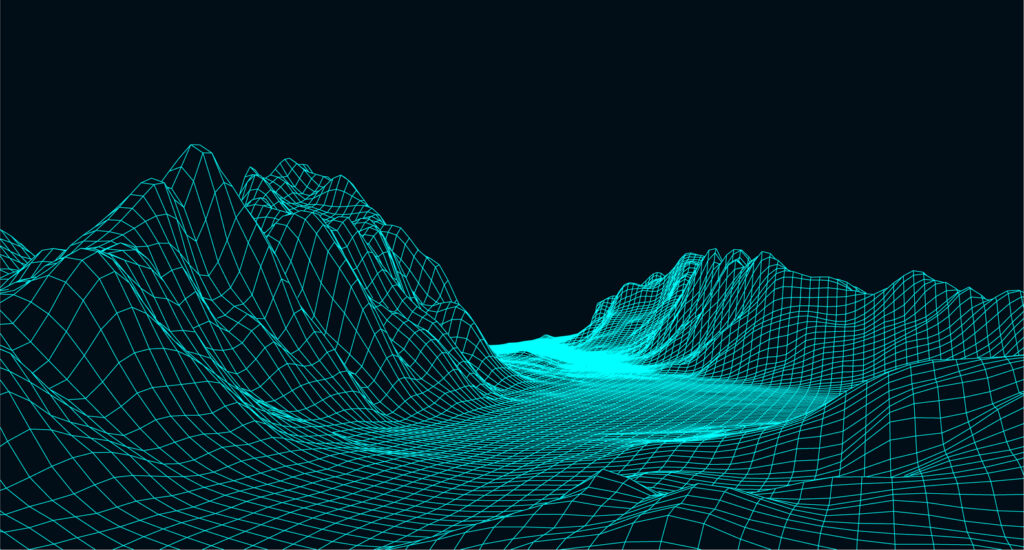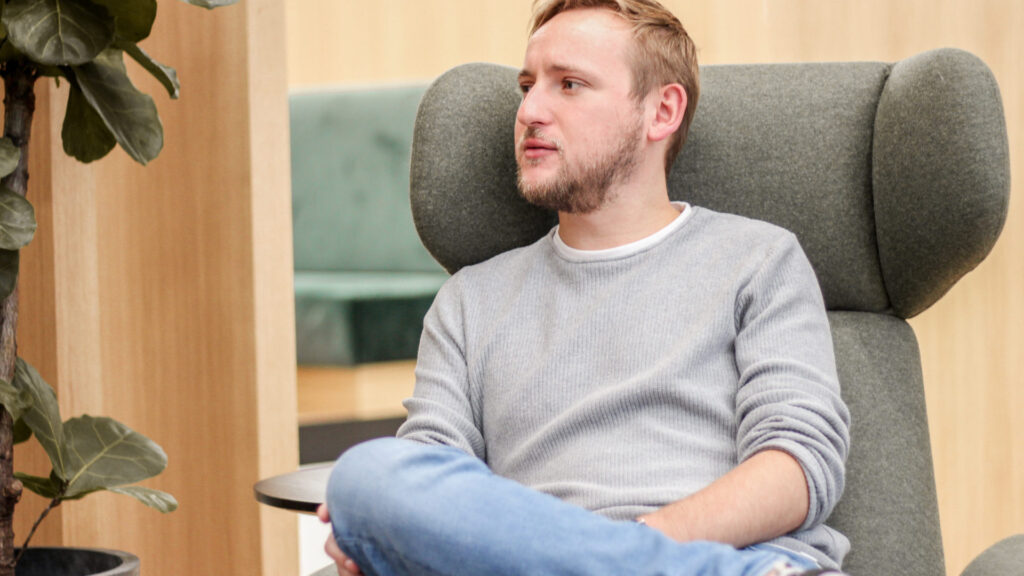A look at the UX Design career path with a focus on the geospatial sector
UX Design is one of the most in-demand skill sets in today’s digital-first world. The field is growing at a rapid pace and overlaps with a wide variety of specific sectors like geospatial. So, it is no surprise that more and more people are considering a career in UX design. But what can a career in this sector look like, and what are the most important things in a UX Designer’s job?
To answer those questions, we sat down with Steve Attewell, User Experience Design Lead at Ordnance Survey, to talk about his UX Design career as well as the world of user experience and how it intersects with geospatial technology.
What has been your personal route into this wonderful world of user experience? How did your UX design career start?
Well, a long time ago, I left university in the mid-90s, and there was this thing called ‘the Internet’ that people were interested in. My brother and I spotted an opportunity that businesses might want to get on the Internet and have websites. We set up a web development company that was focused on business-to-business and tried to convince people that they would need to get on the Internet and have a website one day. That’s how we started, and we ran that for about 18 years.
Then I gravitated toward how people use the Internet, and this discipline called user experience started to appear. I enjoyed that part of running a business more than any other part, and so I became an independent user experience consultant. That is how my UX design career started. In this role, I was helping small/medium-sized businesses get their processes online and interact with customers and business applications. And then, the opportunity to work for the Ordnance Survey came up, and I got into the world of user experience for geospatial applications.
Can you remember when you first identified that UX could be a discipline in its own right?
I suppose, strangely, the first thing that comes to mind is frustration with customers, or not understanding that there’s a human being involved, trying to interact with the information that they want to put online. A classic one is being focused on the wrong things, being focused on imagery and logos, especially in the early days, in the 90s and early 2000s. What they should be concentrating on was the content and what people would get from them.
I always felt that visiting a website is a transaction – you want something from a visitor, and you have to give them something, especially when everything was free. You don’t get something for nothing with a user, so you have to make things compelling for them in order for them to interact with you.
Tell me about what your current role is within OS and how the UX design career looks in geospatial.
So, my current role in OS is leading a team of UX and UI designers. Building internal interfaces, transactional interfaces with our customers, mapping interfaces, and trying to encourage the business to always see the value of the design stage in projects as well. So, it’s really curating a group of designers and furnishing them with a mission to increase awareness of their discipline. I know many UX’ers are frustrated by the issue that design is not recognised within businesses and within highly technical organisations. That can be a problem, but it’s a problem for everybody. And so, positively tackling that by showing your wares and offering services and presenting how valuable they can be is the wider mission of the team.
Are there any stand-out projects that you would want to mention from OS that have benefited from a good UX approach?
I think the business has learned a lot through creating its new Data Hub, which has been a several-year process up to this point. The Data Hub is a whole new way for our customers to interact with our data and get data from us. That project started from a healthy place of design work and usability testing, where talking to users and customers was an essential part of the process. It’s an excellent example of where a long-term, highly technical side of the business has also been embracing user experience techniques.
The National Underground Asset Registry is also a good case of how you can get many benefits from building a demo, then a pilot, and then making the actual thing. That has been a fascinating journey of talking to the people who go out and dig holes in the roads to understand what’s underneath them and what are their pressures and problems. And that was a real eye-opener for me. You’re always told that you’re going to design for low-skilled users, and we’re creating quite complex things for low-skilled users. But here, some of these users were actually technophobic. So, it’s the first time I’ve been in touch with people who are really sceptical about using technology. I had to try to convince them and show them the value of having data available digitally to them.

In your opinion, are there any special considerations that need to go into the UX process when specifically tackling a geospatial project? Is there anything that distinguishes this sector in terms of the UX design career?
Yes, there are! The main problems are related to working with many different types of highly skilled technical people. If you want to use a map to find something, somebody is out there doing a job, and you have to marry that requirement up with data that’s not available. Sometimes data are in different formats all over the place, and sometimes people just don’t want to share it with you! I think the highly technical nature of the data is one of the main difficulties of designing any geospatial application.
You’ll often be working with technical people who maybe don’t see the value in showing some of the things that they have available for a user. And in that highly specialised environment, it’s easy to get lost in the data and forget about the user journey. It can be easy to build the best feature that you could possibly get technically and from a usability point of view. Whereas sometimes, having three functions that work as a unit and allow someone to complete their job is more important than concentrating all your energies on this one amazing feature.
Thinking back to the early days of bringing geospatial to the web, I remember back in the early 2000s, printing out Google Maps for directions and referring to them in a moving vehicle instead of using satnav. How important do you think Google has been in opening up this new world to everyday users?
They’re completely democratising the data. They’re pushing it to be free and democratised, so the price of geospatial data is tending towards zero, and Google led the way on that. It’s not absolutely zero because you share your personal information in exchange for all of this. But it certainly puts pressure on anyone who is not thinking about mapping in a digital fashion. It’s interesting because Google’s mapping may not be the most accurate, but sometimes it’s okay and does the job. If I need to get in my car and drive from here to there, then it’s absolutely fine. However, there are instances where that isn’t good enough. Certainly, if you want to traverse any kind of outdoor wilderness as OS leisure customers do, or if you want to do mining or to put up telegraph poles in specific places, it’s not good enough to do that.
Google entirely led the way, especially with the move to vector mapping – being able to display as much data as you wanted, whenever you wanted. That was an amazing development. Before that, you had to cluster everything in maps, and you could see there were ten things in a location, but you’d have to zoom in to see them, whereas, with the development of vector mapping, you could display what you want when you want.
In the future, there will be all sorts of devices – vehicles, drones flying around and cars with spinning roof racks which will scan everything, and then all of that will be recognised automatically using AI. So, the advent of Google is just the beginning of that stage of automatic geospatial data farming, which is coming soon.
There’s been an increase in the number of large-scale product and service companies creating and fostering their own in-house design and UX teams. So, moving away from the older approach of working with external suppliers to provide those services, what do you think of bringing that in-house? What are some pros and cons?
With in-house, you can establish that relationship with everyone you’re working with, like technical teams and product owners. You can also set a way of working and knowledge sharing that stays within the business. You can have groups of people working on the same project for many years, and for long-term projects, that’s only a good thing. However, you can’t do that with everything because budgets, projects and people flex all the time. So, at Ordnance Survey, I certainly encourage an internal team of designers who can serve the rest of the various business units. However, we also have to accept that sometimes we need to be flexible and get contractors or external companies that can help us with certain things. That’s a strategic decision depending on the needs of our clients within the business.
You mentioned previously a little bit about usability testing. Are there any methods or approaches that you’ve seen or used that you’ve found particularly helpful during your UX design career?
As far as usability testing goes, I would really subscribe to guerrilla testing first before you go out and do the expensive testing. I think there’s cheap and there’s costly usability testing. The cheap stuff is finding someone who’s spoken to some people or interacts with the people that you’re building for or doesn’t know anything about your project and is just willing to give you a hand to test the interface. Then you get much more expensive to arrange and organise tests with the actual users. You get more value at that point because they’re not getting confused about some wording on the login or something like that. And things like that can really derail a test and unsettle people.
I advocate any type of testing, really. There’s no bad testing! Just show it to somebody, show them a picture all the way to doing a formalised, long-term, well-planned, 30-minute task. That could be either remote or in person. Personally, I prefer in-person with talking to people and giving them an opportunity to speak. At the end of the formal testing, I like to say that the test is over so that they can relax and later ask them the rest of the test questions. That’s just a little fun trick – to tell people the test is over and then ask them some more questions. I would always recommend that!
Thinking more broadly outside of the geospatial arena, do you think there are any other areas of life that you feel would benefit from better UX input or process?
The NHS. I have interactions with the NHS because my wife has multiple sclerosis, and so we are often visiting hospitals doing tests. We’re in hospitals trying to find our way around, and we’re trying to navigate this user process. If you’ve ever walked into a hospital waiting room, and you look at the posters on the wall, you’ll see really important pieces of information, just randomly set all over the walls, and there won’t be any information about what to do. It’s difficult to find in that noise what you’re doing now and what you’re supposed to do next. And you’ve just arrived with nothing other than the piece of paper saying you’re supposed to be here now.
That’s just one example, but the whole process of continuity of care for people is very fragmented. I think it really would benefit from a deeper understanding of how people interact with that system and how they move from one part to another. That’s a challenging thing to do, and everyone we interact with within the NHS is fantastic and does an amazing job. It’s just when you move between those people, get to an event, or leave an event, that can be very, very tricky, and the upshot of that is a huge cost of time, money, and well-being for people, not only for the NHS but also for the people who interact with it.
When it comes to yourself and keeping abreast of trends, the best practices, and innovations in this field, are there any places that you regularly visit for work-related materials? Are there any places you would recommend to people who are just starting their UX design careers?
We open something up to the team to find interesting things. I think they’ve got voracious appetites for finding new and exciting developments. We have a biweekly sharing meeting in which we exchange with each other anything new that may be valuable for other people to look at. We’ve got things in an O’Reilly subscription, and it’s actually been very difficult to find a subscription service which has great design content on it. Furthermore, we have also put the team on some Nielsen Norman Group training, and those sessions are fantastic as well.
Finally, do you have any advice for people looking to start a UX design career?
If you’re looking to get a job and don’t yet have the experience, just evidence of something that you’ve done off your own back or projects that you’ve done on some course. It is important to show enthusiasm for it and for user experience. Concentrate on the person and their needs, not the technology. I think research and talking to people and understanding their problems and what solutions might benefit them is more valuable to evidence than showing interface designs and things like that. I do see quite a lot of portfolios that are just about the interface and don’t say how you decided or how you got to that solution. Who did you talk to? What did they tell you? What research have you done outside of that conversation? What did you discount as a solution as well? That would be one piece of advice.
Another one is that if you don’t have evidence why you’re doing something while you’re putting effort into some feature or interface, then there’s no way that you’ll be able to justify doing it when someone else on your project says there isn’t time to do it. I know evidence and research can be difficult to put into projects when you’re starting out. But even if you can only do a small amount and prove that a user needs this feature or this piece of interface that you’re going to build, it’ll serve you in great stead when budgets get squeezed, and there isn’t enough time available. Just keep an eye on the research and users’ needs.
It sounds like there’s also some use of soft skills during a professional UX design career. Cultivating empathy, and also being able to justify and articulate your own priority list for why a decision should be made or why a certain thing should be put into place. Would you say that’s right?
Yes, very, very true. It’s definitely about articulating a reason behind something, and just base opinion won’t cut it. You have to go back to the needs of the person, of the human being that you’re designing for. You can never stop things from being cut from projects, but you can make people aware of what they are missing and what won’t happen. What problems won’t you be solving for people if you cut this particular feature?
If you are a UX Designer already, have you considered growing your skills into the unique challenges that exist in Geospatial? And finally, if you are interested in building your career in UX Design, check out some of our job vacancies on the careers page.
About the author
Recommended articles
Contact




